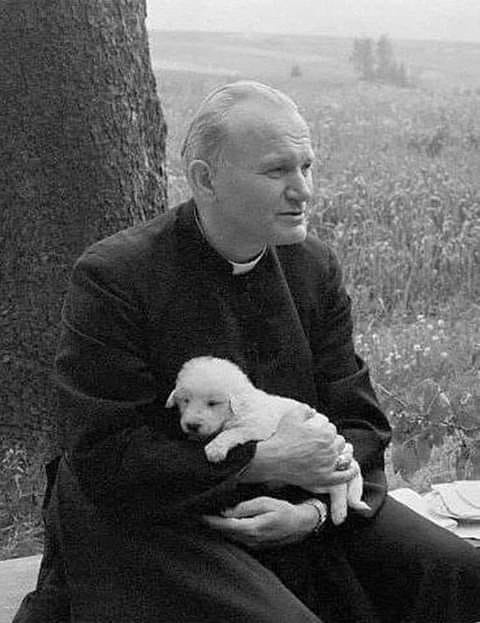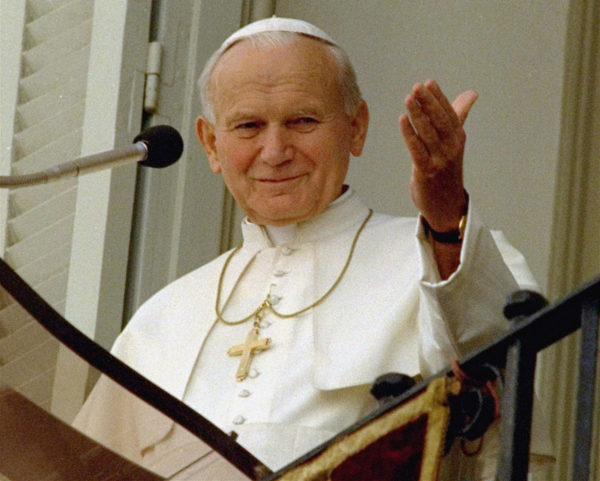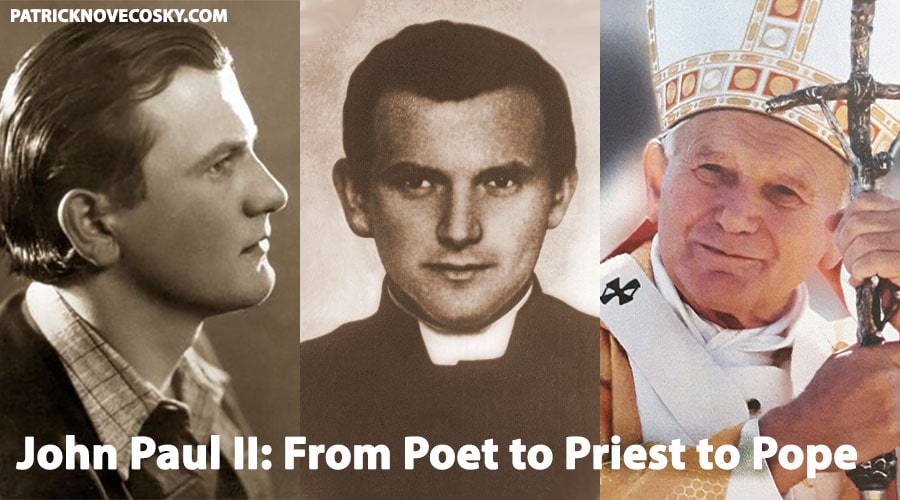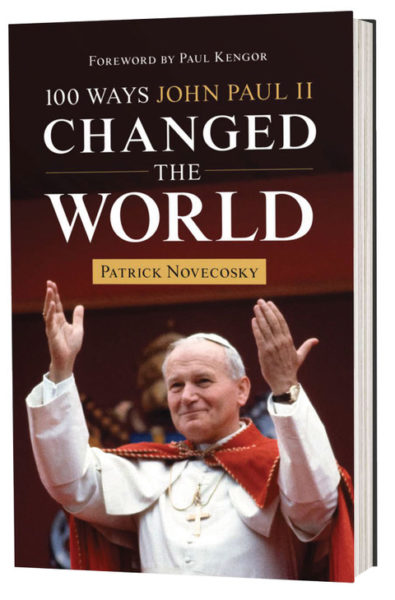by Patrick Novecosky
When celebrated poet and actor Karol Wojtyła told his friends that he was leaving the stage to study for the priesthood, they were shocked. The young thespian not only captivated audiences with his intense performances, but he had a rare charisma that enchanted everyone he met.
That young man’s change of vocation—which put him in mortal danger—ultimately took him from the small stage in Poland to the world stage for more than 26 years as Pope John Paul II.
The future saint was ordained a priest 75 years ago today.
After Wojtyła finished high school in his hometown of Wadowice, he and his father moved to Kraków in August 1938 so the teenager could study at the Jagiellonian University. There he joined an avant-garde student theater troupe.
Then came the German invasion a year later, which pushed his theatrical pursuits underground. He later described himself as “completely absorbed by a passion for literature, especially dramatic literature, and for the theater.”
But after his father died suddenly at the age of 61 in February of 1941, the newly orphaned 20-year-old began to question deeply his future. The career he thought God was calling him to —acting — suddenly seemed less significant.
In 1942, the future pope began his theological studies in a clandestine seminary under the direction of Cardinal Adam Sapieha. The cardinal soon moved the seminary to the basement of his home because the Nazi occupiers were regularly executing known seminarians.
During his secret studies, Wojtyła worked for a time as a laborer at a chemical plant and stone quarry in Kraków.

Karol Wojtyla broke the mold both as a priest and as pope
“My priestly vocation matured in me precisely in that difficult situation,” John Paul II said in 1995. “It matured amidst my country’s suffering; it matured in physical work among the workmen; it also matured thanks to the spiritual direction of various priests, especially that of my confessor.”
With the end of the war and the Nazi defeat in 1945, Poland came under a Soviet-backed communist regime. But the threat to seminarians was still real. The communists had placed tight restrictions on any public display of the faith.
So, when Wojtyła was ordained to the priesthood on Nov. 1, 1946, only a year after the end of the war, it was not in Krakow’s glorious cathedral but rather in the upstairs chapel of the bishop’s residence.
The next day—All Souls Day—the new priest celebrated three “low Masses” in the Latin Rite for the souls of his parents and older brother in St. Leonard’s Crypt under Kraków’s Wawel Cathedral, amid the tombs of Poland’s kings and national heroes. A few days later, he celebrated his first “high Mass” in his hometown of Wadowice.
The Polish pontiff’s view of the priesthood remained essentially the same throughout his priestly life. In a retreat he preached to Pope Paul VI and the Roman Curia in 1976, he defined the priesthood as a mystery of humanity. He reiterated that the central focus of the priesthood is the Eucharist: The priest celebrates the sacraments as a man of prayer who gives witness to the kingdom of God by his celibacy.
“Holy Mass is the absolute center of my life and of every day of my life,” John Paul said in 1995 in a reflection on his upcoming 50th anniversary of ordination. “It is at the heart of the theology of the priesthood, a theology I learned not so much from textbooks as from living examples of holy priests.”
A year later, he wrote Gift and Mystery, which celebrated his 50 years as a priest.

John Paul II, pictured here in 1989, found great joy in his vocation as a priest
“While the Second Vatican Council speaks of the universal call to holiness, in the case of the priest we must speak of a special call to holiness,” he wrote. “Christ needs holy priests! Today’s world demands holy priests! Only a holy priest can become, in an increasingly secularized world, a resounding witness to Christ and his Gospel. And only thus can a priest become a guide for men and women and a teacher of holiness.”
John Paul II wrote a letter to priests every year on Holy Thursday. In 2005, in what turned out to be his final message as pope, he said: “People have a right to turn to priests in the hope of ‘seeing’ Christ in them. The young feel the need for this especially; Christ continues to call them, to make them his friends and to challenge some to give themselves completely for the sake of the Kingdom.”
The saintly pope lived his priesthood with courage and passion. In doing so, he inspired a wave of new priests—the “JP2 Generation”—essentially ending the vocations crisis in some regions of the world.
“He radiated a conviction, a confidence, a courage that a skeptical and frightened world craved,” said Cardinal Timothy Dolan. “And young men were among them, reluctant to commit their lives to a question mark, but itching to embrace an exclamation point! They were tired of living in doubt and fear.”
Patrick Novecosky is a Virginia-based journalist, author, international speaker, and pro-life activist. He met Pope St. John Paul II five times. His new book is 100 Ways John Paul II Changed the World.



Beautiful write up. Thank you!